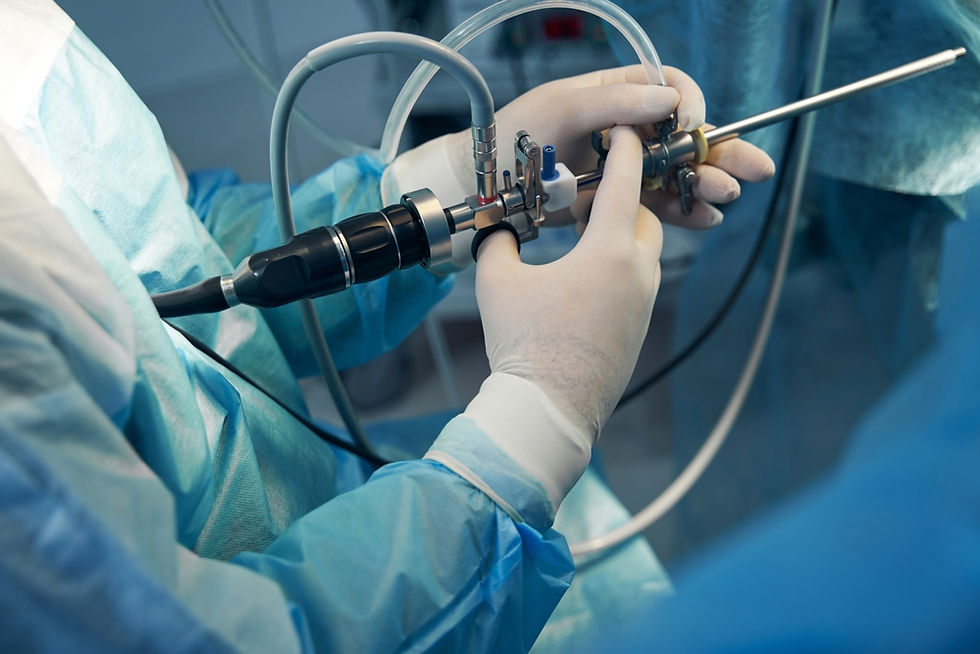




Hysteroscopy
This procedure involves inserting a hysteroscope, a slender lighted instrument, through the cervix to examine the inside of the uterus. It helps diagnose and treat various conditions without the need for incisions.




Gynaecological Hysteroscopic surgeries at Pauls Hospital
At Pauls Hospital, we specialise in hysteroscopic procedures, a minimally invasive technique that allows for the diagnosis and treatment of various gynaecological conditions within the uterus. These procedures offer patients an effective, safe, and less invasive alternative to traditional surgery, enabling quicker recovery and minimal discomfort. Below, we provide a comprehensive overview of the hysteroscopic process, from patient counselling and preparation to the procedure itself and the recovery period.
Paul's Hospital
Providing the Best Hysteroscopic Service
Hysteroscopy is used to diagnose or treat issues like abnormal bleeding, uterine fibroids, polyps, adhesions (scar tissue), or to investigate the cause of infertility or repeated miscarriages.
Minimally Invasive: The procedure is performed without incisions, resulting in no visible scars and a shorter recovery time.
Quick Recovery: Most patients resume normal activities within a day or two, minimizing disruption to their daily lives.
Same-Day or Next Day Discharge: As a day-care procedure, most patients can go home a few hours after the surgery.
Accurate Diagnosis and Treatment: Hysteroscopy provides a direct view of the uterine cavity, allowing for accurate diagnosis and precise treatment of uterine abnormalities.
Reduced Complications: With a minimally invasive approach, there is a reduced risk of complications such as infection or bleeding compared to more invasive surgeries.
A diagnostic hysteroscopy usually takes about 15-30 minutes. If it's done to treat a condition, it may take longer, depending on the complexity of the treatment.
-
Your doctor will give you specific instructions, but you may need to avoid eating or drinking for a few hours before the procedure. Also, let your doctor know if you’re pregnant or on any medications.
-
Hysteroscopy can be used to remove small fibroids or polyps within the uterine cavity. It is a less invasive option compared to traditional surgery or laparoscopy.


Process of Our Hysteroscopic Surgeries

1. Patient Counselling and Consultation

2. Preoperative Preparation

3. The Hysteroscopic Procedure

4. Postoperative Recovery and Care


List Of Hysteroscopic Surgeries Performed At Paul's Hospital
-
Hysteroscopic Polypectomy
-
Hysteroscopic Myomectomy
-
Hysteroscopic Endometrial Ablation (Abnormal Uterine Bleeding)
-
Hysteroscopic Metroplasty (Congenital Uterine Anomaly Septum)
-
Hysteroscopic Cannulation For Proximal Tubal Block
-
Hysteroscopic Adhesiolysis For
Asherman’s Syndrome

When should you alert the healthcare provider after the procedure?
Call us at +91-4842344447 right away if you have any of these symptoms:
-
Severe abdominal pain
-
High fever or chills
-
Excessive bleeding or discharge from the incision
-
Difficulty breathing
-
Persistent nausea or vomiting
How long is the recovery after a hysteroscopy?
Can hysteroscopy affect my fertility?
When can I go back to work after a hysteroscopy?
What are the risks associated with hysteroscopy?
Will I need a follow-up appointment after hysteroscopy?
Can hysteroscopy be done during menstruation?



